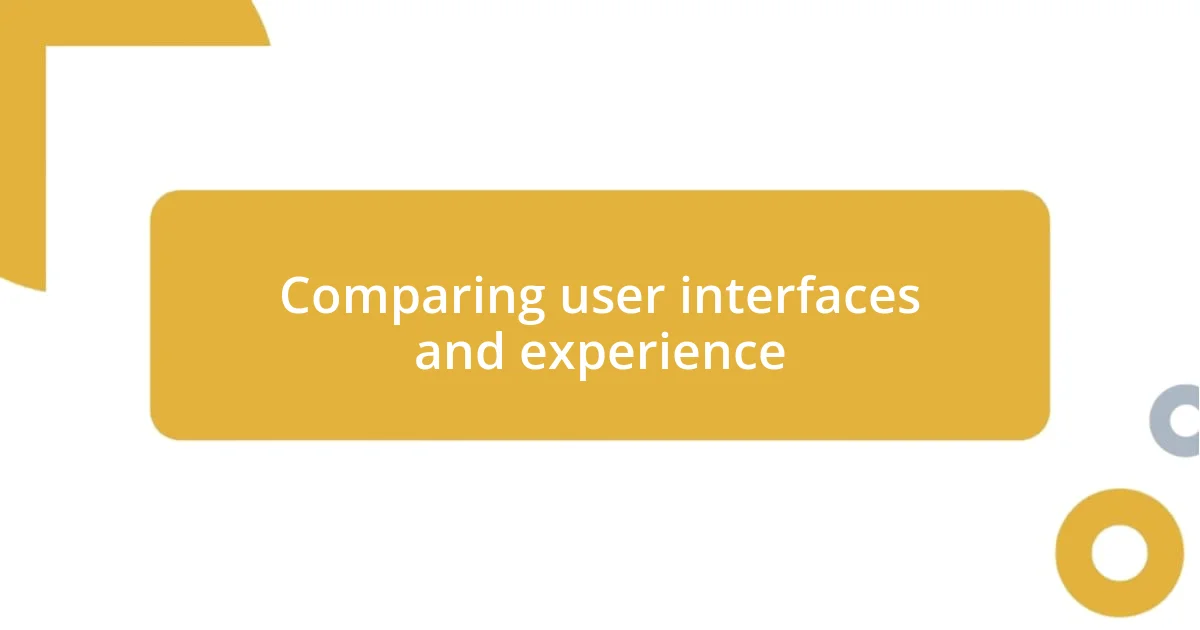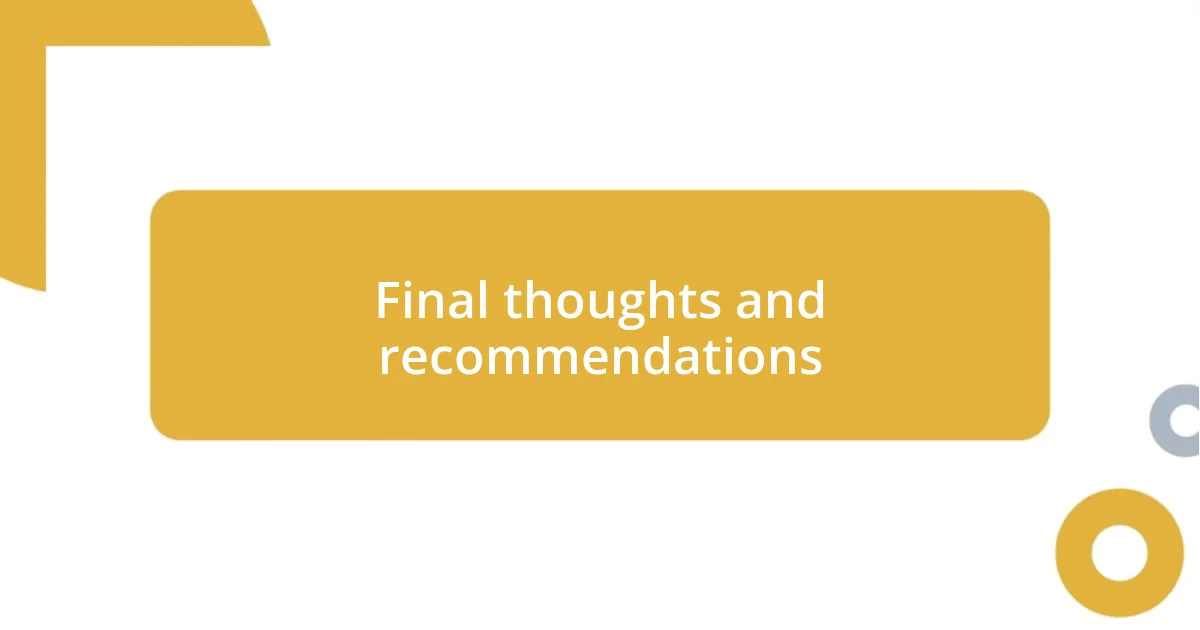Key takeaways:
- Initial experiences with language learning sparked a passion for communication, emphasizing the importance of stepping out of one’s comfort zone.
- Choosing the right app based on personal learning style and preferences significantly enhances the effectiveness and enjoyment of language learning.
- Setting personal goals and staying flexible with app usage allows for a more engaging and successful language learning journey.

My language learning journey
Learning a new language has been a fascinating yet challenging journey for me. I still remember the first time I tried to speak French; my heart raced as I stumbled over simple phrases at a café in Paris. It’s funny to think about how nervous I was, yet that experience sparked a genuine passion for communication, making me realize the beauty of stepping out of my comfort zone.
As I delved deeper into language learning, I encountered highs and lows. One pivotal moment was when I finally held a conversation with a local in a small town in Italy. The sense of accomplishment was overwhelming! Has there ever been a time when you felt you truly connected with someone, despite the language barrier? For me, those moments felt like magic—turning a simple exchange of words into meaningful experiences.
Looking back, every app I tried, every lesson I invested time in, shaped my understanding of not just the language, but also the cultures behind them. Have you ever felt frustrated with vocabulary that just wouldn’t stick? I often did, spending late nights reviewing flashcards, convinced that persistence would pay off—and it truly did. Each effort contributed to my fluency, and I learned to embrace the journey, with all its bumps along the way.

Choosing the right app
Choosing the right app can feel overwhelming given the multitude of options available. I remember staring at my phone, comparing screenshots of different apps and feeling a twinge of anxiety. Each had its unique features, but what I found most helpful was identifying my personal learning style and goals before diving into a choice. Do you prefer gamified experiences, or are you more into structured lessons? Reflecting on this really helped streamline my decision.
As I explored various applications, I noticed that some suited my interactive learning preference while others focused more on grammar. One app had engaging speaking exercises that made me feel like I was conversing with a friend, while another offered comprehensive grammar explanations but lacked interactive elements. By determining what worked best for me, I was able to find the right fit that not only held my interest but also effectively propelled my language skills forward.
In shifting through these options, it became evident that not all apps are created equal. For example, while one app might excel in vocabulary building, it could fall short in pronunciation practice. To aid your decision-making process, I’ve created a simple comparison table to highlight various aspects of popular language learning apps. It’s a useful way to visualize how different platforms can cater to your specific needs.
| App Name | Key Feature |
|---|---|
| Duolingo | Gamified Learning |
| Babbel | Structured Lessons |
| Rosetta Stone | Immersive Method |
| Anki | Custom Flashcards |
| Tandem | Language Exchange |

Key features of language apps
When I think about the key features of language apps, a few stand out to me that really enhanced my learning experience. Personally, I appreciated apps that offered a blend of vocabulary, grammar, and speaking practice. This mix not only kept things interesting but also catered to different aspects of language use. For instance, encountering interactive games was a game-changer for me; they turned rote memorization into engaging challenges that I genuinely looked forward to.
Here are some key features that I found particularly useful in language learning apps:
- Gamification: Elements like points, levels, and rewards to motivate users.
- Speech Recognition: Tools that allow users to practice pronunciation and receive feedback.
- Personalized Learning Paths: Tailored content based on user preferences and proficiency levels.
- Cultural Insights: Information that provides context and context for the language, enriching the learning experience.
- Community Support: Forums or chat features where learners can connect, practice together, and share experiences.
Finding an app that combined these elements helped me stay engaged and truly invested in my learning. I remember one app that had a friendly daily reminder feature—it felt like a gentle nudge from a language-learning buddy, urging me to keep moving forward. That small touch made a world of difference in maintaining my motivation.

Comparing user interfaces and experience
When I first navigated the user interfaces of different language learning apps, I experienced a spectrum of emotions. Some felt intuitive and welcoming, while others left me frustrated. I clearly remember one app where the layout was so cluttered that I often found myself clicking around in confusion, which made me lose interest quickly. It raises the question: How important is a clean design in keeping a user engaged? In my case, a simplified interface made all the difference.
A standout feature in my favorite app was its vibrant color scheme and easy-to-use navigation. It felt like a breath of fresh air to interact with an app that understood user experience. Each section was clearly labeled, and I could effortlessly transition from vocabulary practice to speaking exercises without feeling overwhelmed. Such thoughtful design choices not only made learning enjoyable but also built a sense of confidence in my progress.
Then there were the interactive elements that truly elevated my experience. I recall discovering a particular app that had playful animations and sound cues that responded to my actions. This added a layer of excitement, making me feel like I was part of a game rather than just studying. It sparked a joy in learning that I hadn’t expected. How do these elements impact your learning motivation? For me, engaging designs turned what could have been tedious practice into an enjoyable exploration of a new language.

Evaluating content and lessons
Evaluating the content and lessons offered in language learning apps can be quite revealing about their effectiveness. I remember diving into an app that structured its lessons around real-life conversations. This real-world application not only made learning relevant but also kept me motivated to practice speaking. I found myself asking—how could I use these phrases in my daily life? With each lesson, that question pushed me to engage more actively with the content.
I also noticed that some apps provide lessons that can feel repetitive. I once tried one that recycled the same vocabulary too often, leaving me feeling bored and stagnant. On the other hand, I encountered an app that mixed in fresh vocabulary with culturally rich scenarios related to food, travel, and customs. This not only enhanced my vocabulary but also made each lesson feel like an exciting discovery. What I learned was that variety is the spice of life, especially in language learning.
One standout feature I greatly appreciated was how some apps integrated storytelling into their lessons. Instead of just memorizing words, I could follow a character’s journey while learning. It made the lessons feel like a narrative, making me emotionally invested in the content. How often have you felt excitement from a lesson that felt alive? For me, this approach transformed language learning from a chore into an adventure.

Analyzing effectiveness and engagement
When I reflect on the effectiveness of language learning apps, engagement stands out as a crucial factor. I remember using an app that employed gamified elements, such as earning points and rewards for completing lessons. This approach sparked a competitive edge in me—looking forward to outscoring my previous self kept my motivation high. I can’t help but wonder: How can a few simple game mechanics make such a difference? For me, it transformed the learning process into something I eagerly anticipated.
Another aspect that captivated me was the community features many apps offered. I found myself joining forums where learners from around the world shared tips and experiences. The sense of camaraderie made me feel less isolated in my journey; it was comforting to see others navigating the same challenges. I often think, how vital is this social interaction in keeping us engaged? In my experience, connecting with fellow learners not only added a layer of accountability but also injected a dose of enthusiasm into my daily practice.
Lastly, the variety in assessment methods really caught my attention. One particular app incorporated interactive quizzes that were not just about memory recall; they required me to apply what I’d learned in different contexts. I enjoyed the rush of solving these challenges, especially when I realized I could articulate my thoughts in a new language with ease. Do traditional tests push you away from learning? Personally, engaging assessments turned what could have been a dull review into an exciting opportunity to demonstrate my progress.

Final thoughts and recommendations
It’s essential to choose a language learning app that aligns with your personal learning style. I remember a time when I was torn between two apps; one focused on grammar drills, while the other emphasized conversational practice. I ultimately went with the one that prioritized speaking, as I craved practical conversations more than memorizing rules. Have you ever noticed how your interest can shift the effectiveness of your learning? Choosing what resonates with you can make a world of difference.
Another recommendation I’d make is to stay flexible with your app usage. I often rotated between several apps to keep things fresh, discovering that each brought unique strengths. For example, when I felt my vocabulary was lacking, I’d switch to an app known for its rich word bank and engaging contexts. This strategy not only fueled my motivation but also helped me grasp the language from various angles. Are you open to diversifying your tools?
Finally, don’t underestimate the power of setting personal goals while using these apps. Early on in my journey, I set a goal to have a full conversation with a native speaker within three months. This target pushed me to engage more actively, even urging me to seek out speaking partners through the community features in the apps. How did it feel when I finally hit that milestone? It was exhilarating and reinforced my belief that with the right approach, those language-learning dreams can indeed become a reality.













